|
|
|
HOME
|
US Navy -
ships
|
US Navy - air
units
|
USMC - air
units
|
International
Navies
|
Weapon Systems
|
Special Reports |
|
Surface Vessel Weapon System Naval Strike Missile - NSM / JSM Kongsberg Defence Systems anti-ship / land-attack cruise missile |
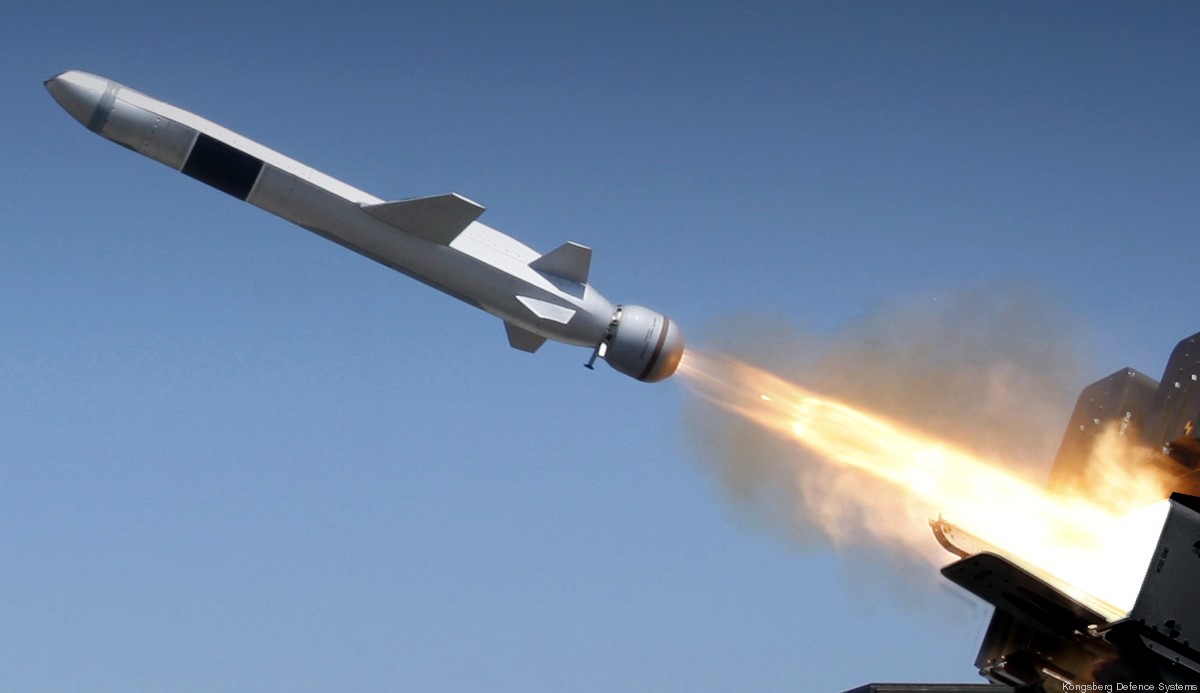 |
| 07/19 |
|
The Naval Strike Missile (NSM) is an anti-ship and land-attack
missile developed by the Norwegian company Kongsberg Defence Systems
(KDS). The original Norwegian name was Nytt sjømålsmissil (literally New sea target missile, indicating that it is the successor of the Penguin missile); the English marketing name Naval Strike Missile was adopted later. Manufacturer: Kongsberg Defence & Aerospace, Norway Length: 4 meters (157 inches) Weight: 416 kg (917 lb) Warhead: 125 kg (276 lb) - HE Blast fragmentation Detonation mechanism: programmable fuze Engine: Solid fuel rocket booster / Microturbo TRI 40 turbojet engine Flight altitude: sea skimming Speed: high subsonic Guidance: Inertial, GPS, terrain-reference navigation, infra-red homing, target database Operational Range: NSM 185 km (100 NM) JSM 185 km (100 NM) at low-low-low profile / 555 km (300 NM) at hi-hi-low profile Development: The Naval Strike Missile's initial serial production contract was signed in June 2007. It has been chosen by the Royal Norwegian Navy for its new Fridtjof Nansen class frigates and Skjold class patrol boats. In December 2008 the NSM was selected by the Polish Navy, which ordered total 50 land-based missiles (including 2 for testing) under deals from 2008 and 2011, with delivery planned for 2013-2016. The final milestone was completed in June 2011 with tests at Point Mugu. On 12 April 2011, the Norwegian Ministry of Defense announced phase 2 of development. On Wednesday, October 10, 2012, the Royal Norwegian Navy marked history by firing an NSM for the first time. The vessel in question was the HNoMS Glimt, Skjold class patrol boat. On Wednesday, June 5, 2013, the Royal Norwegian Navy for the first time test fired an NSM missile carrying a live warhead against a target vessel. The decommissioned Oslo class frigate HNoMS Trondheim was hit and the munition functioned as intended. In June 2013 Poland completed the Coastal Missile Division equipped with 12 NSM and 23 vehicles on Jelcz chassis (inc. six launchers, two TRS-15C radars, six fire control and three command vehicles). Ultimately, the Coastal Missile Division will be equipped with 12 launchers carrying four missiles each for a total of 48 missiles. In December 2014 Poland ordered a second batch of launchers and missiles to equip a Naval Strike Missile battalion. In late July 2014, the U.S. Navy confirmed that the NSM would be tested aboard the littoral combat ship USS Coronado (LCS-4). The test occurred successfully on 24 September 2014. Kongsberg and Raytheon teamed to pitch the NSM to equip the LCS as its over-the-horizon anti-ship missile in 2015. By May 2017, the extended-range Boeing RGM-84 Harpoon and Lockheed Martin LRASM had been withdrawn from the Navy's Over-the-Horizon Weapon System (OTH-WS) competition, leaving the NSM as the only remaining contender. On 31 May 2018, the Navy officially selected the NSM to serve as the LCS' OTH anti-ship weapon. The $14.8 million initial contract award to Raytheon calls for the delivery of Kongsberg-designed "encanistered missiles loaded into launching mechanisms; and a single fire control suite,” and buys about a dozen missiles; the entire contract value could grow to $847.6 million if all contract options are exercised. The Navy plans to deploy the NSM in late 2019. During RIMPAC 2014 the frigate Fridtjof Nansen made a successful firing of the NSM during a SINKEX, with the missile impacting and detonating as designed. In the LIMA exhibition 2015, Malaysia announced that the Naval Strike Missile had won the contract to fulfil the Royal Malaysian Navy's Maharaja Lela-class's anti-ship missile requirement. In February 2017, the Norwegian government announced that the German Navy will acquire "a significant amount" of Naval Strike Missiles under a deal valued at "more than 10 billion NOK". During RIMPAC 2018, USARPAC will fire a Naval Strike Missile from the shore to sink a ship. Design and features: The state-of-the-art design and use of composite materials is meant to give the missile sophisticated stealth capabilities. The missile will weigh slightly more than 400 kg (880 lb) and have a range of at least 185 km (100 nm). NSM is designed for littoral waters ("brown water") as well as for open sea ("green and blue water") scenarios. The usage of a high strength titanium alloy blast/fragmentation warhead from TDW is in line with the modern lightweight design and features insensitive high-explosive. Warhead initiation is by a void-sensing Programmable Intelligent Multi-Purpose Fuze designed to optimise effect against hard targets. Like its Penguin predecessor, NSM is able to fly over and around landmasses, travel in sea skim mode, and then make random manoeuvres in the terminal phase, making it harder to stop by enemy countermeasures. While the Penguin is a yaw-to-turn missile, NSM is based on bank-to-turn flight (see Yaw (flight) and flight control). The target selection technology provides NSM with a capacity for independent detection, recognition, and discrimination of targets at sea or on the coast. This is possible by the combination of an imaging infrared (IIR) seeker and an onboard target database. NSM is able to navigate by GPS, inertial and terrain reference systems. After being launched into the air by a solid rocket booster which is jettisoned upon burning out, the missile is propelled to its target in high subsonic speed by a turbojet sustainer engine - leaving the 125 kg multi-purpose blast/fragmentation warhead to do its work, which in case of a ship target means impacting the ship at or near the water line. An NSM coastal battery consists of 3 Missile Launch Vehicles, 1 Battery Command Vehicle, 3 Combat Command Vehicles, 1 Mobile Communication Center, 1 Mobile Radar Vehicle with TRS-15C radar, 1 Transport/Loading Vehicle, and 1 Mobile Workshop Vehicle. Each MLV carries 4 missiles and can be connected to the CCV by optical fiber or radio up to 10 km (6.2 mi) away; up to 6 launchers with 24 missiles can be netted together at once. When installed on ships, NSMs can be deck-mounted in packs of one, two, three, four, or six launchers. Total installation weight, including electronics and cabling, is 8,600 lb (3,900 kg) for four launchers, 17,000 lb (7,700 kg) for eight launchers, and 26,000 lb (12,000 kg) for 12 launchers. Joint Strike Missile: A multi-role version of the NSM is in development. This missile is called Joint Strike Missile (JSM) and will feature an option for ground strike and a two-way communications line, so that the missile can communicate with the central control room or other missiles in the air. This missile will be integrated with the Lockheed Martin F-35 Lightning II. Studies have shown that the F-35 would be able to carry two of these in its internal bays, while additional missiles could be carried externally. Lockheed Martin and Kongsberg signed a joint-marketing agreement for this air-launched version of the NSM, as well as an agreement committing both parties to integrating the JSM on the F-35 platform. The project is funded by Norway and Australia. Kongsberg signed a contract for the first phase of development of the JSM in April, 2009, which is scheduled for completion within 18 months. The JSM will have multicore computers running Integrity real-time operating system from Green Hills Software. Improved features for the Joint Strike Missile include: • Shape changed to fit in F-35 internal bay • Ability to attack sea and land based targets • Aerial launch platform (F-35) • Improved range over NSM, estimates include 150 nmi (280 km) to >100 nmi low-low-low or > 300 nmi (560 km) hi-hi-low flight profiles • Heavier 500 lb (230 kg) warhead On 15 July 2014, Kongsberg and Raytheon announced that they had formed a teaming agreement to offer the JSM to the United States Navy for their Offensive Anti-Surface Warfare (OASuW) requirement; Raytheon would produce JSMs for the American market. The Navy plans to begin a competition for the OASuW requirement in 2017, which will likely put the Kongsberg/Raytheon JSM against the Lockheed Martin Long Range Anti-Ship Missile (LRASM). Kongsberg is studying methods to deploy the JSM from Norway's submarines, and found shaping the missile to fit into the F-35's confined bomb-bay also enabled it to fit in the Mark 41 Vertical Launching System. A VL-JSM could also compete with the Lockheed LRASM for the U.S. Navy's OASuW Increment 2 for a ship-launched anti-ship missile. Australia expressed interest in buying the JSM in June 2014 to equip their F-35 fighters. The missile has also been pitched to South Korea and Japan, and Kongsberg is expected to attempt to make sales to other countries that have ordered the F-35A. The JSM is expected to become fully operational in 2025. Development is aimed to be completed in 2017 and achievement of initial operational capability (IOC) is expected in 2021 with the release of the F-35's Block 4 software. Fit checks have been performed on the external hardpoints of all F-35 variants, and internally on the F-35A and C-models. Countries that operate other aircraft have expressed interest in the JSM, and fit checks have also been performed on the F-15 Eagle and F/A-18 Hornet, but integration on other platforms will not be conducted without a confirmed customer. On 15 September 2015 the Australian government signed an agreement to finance the development of a passive radio frequency seeker to complement the existing infrared target seeker. In November 2015, an F-16 Falcon successfully completed live-fire testing of the JSM at the Utah Test and Training Range. Current operators: Norway Skjold-class corvette Fridtjof Nansen-class frigate Poland Coastal Missile Division Future operators: Malaysia Maharaja Lela-class Germany German Navy United States Freedom-class littoral combat ship Independence-class littoral combat ship source: wikipedia |
| images |
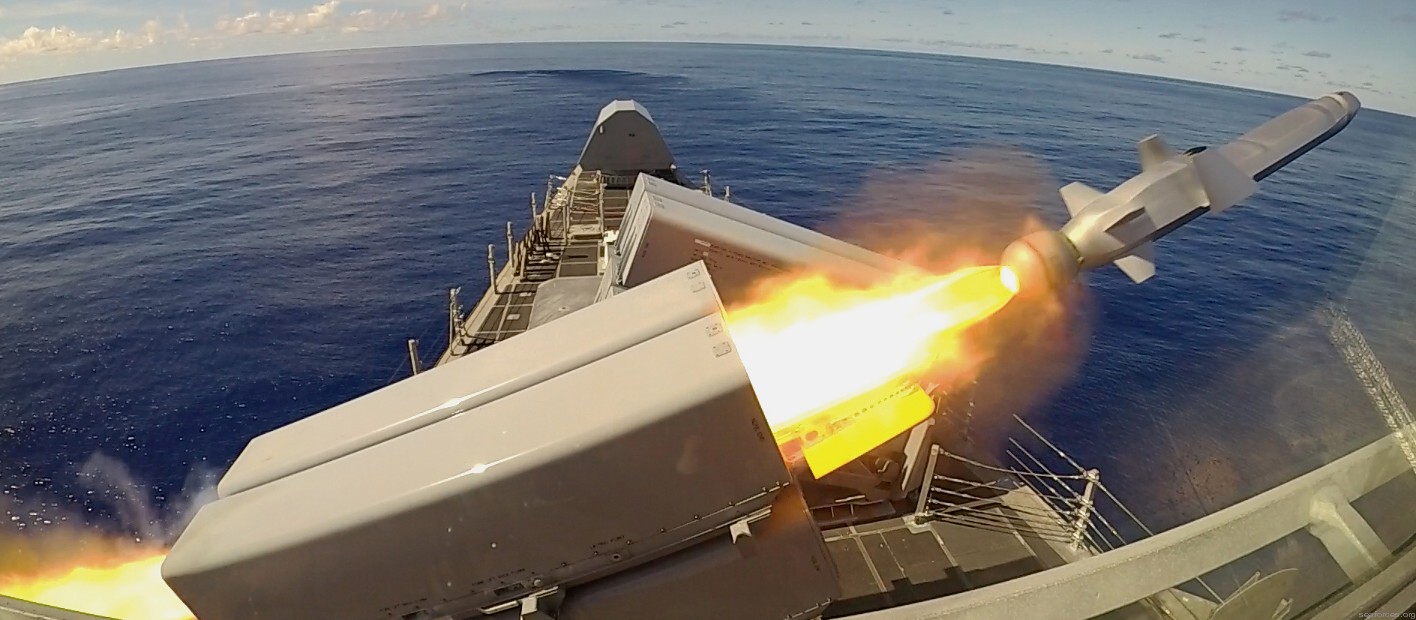 Naval Strike Missile (NSM) was launched from USS Gabrielle Giffords (LCS 10) 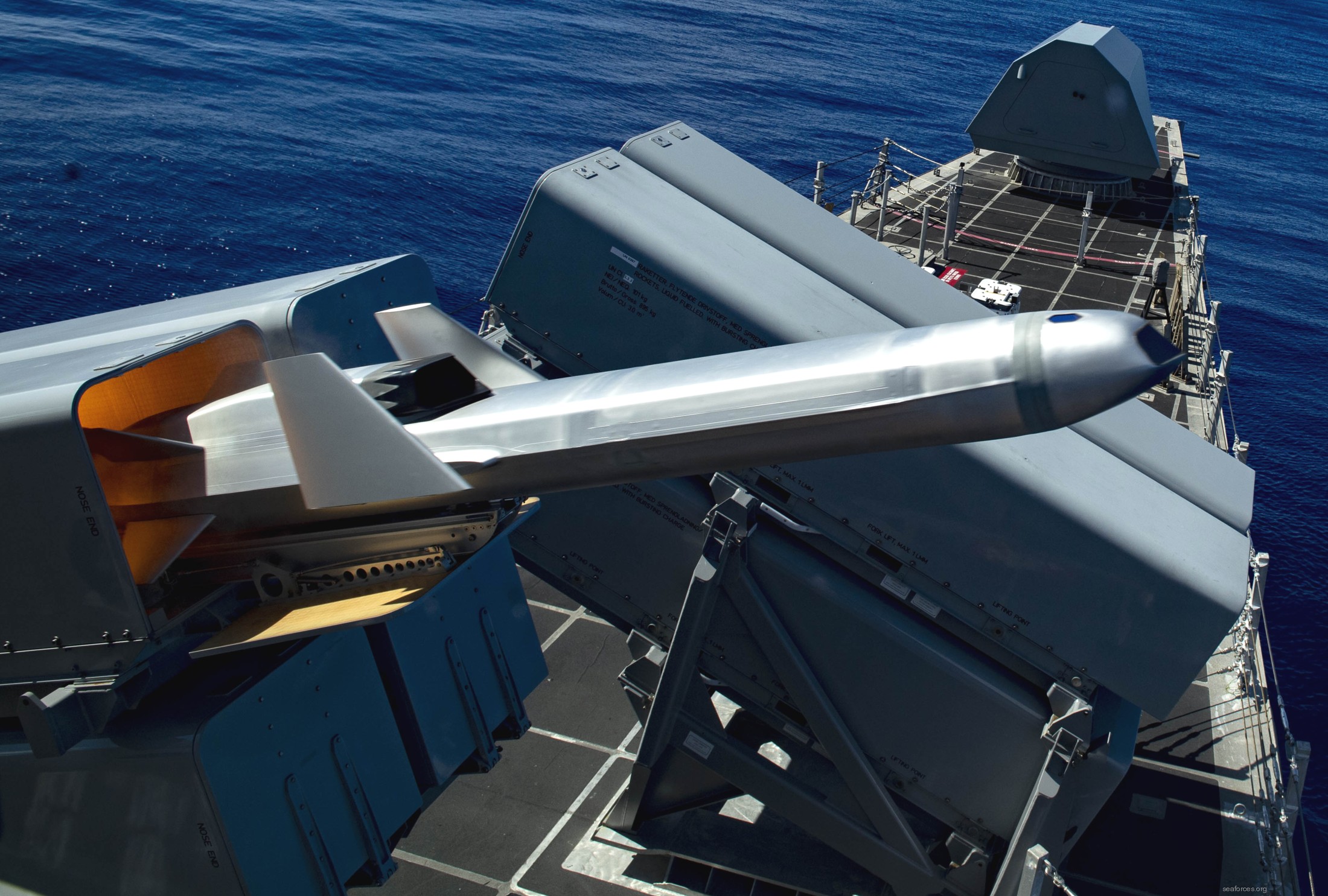 Naval Strike Missile (NSM) was launched from USS Gabrielle Giffords (LCS 10) 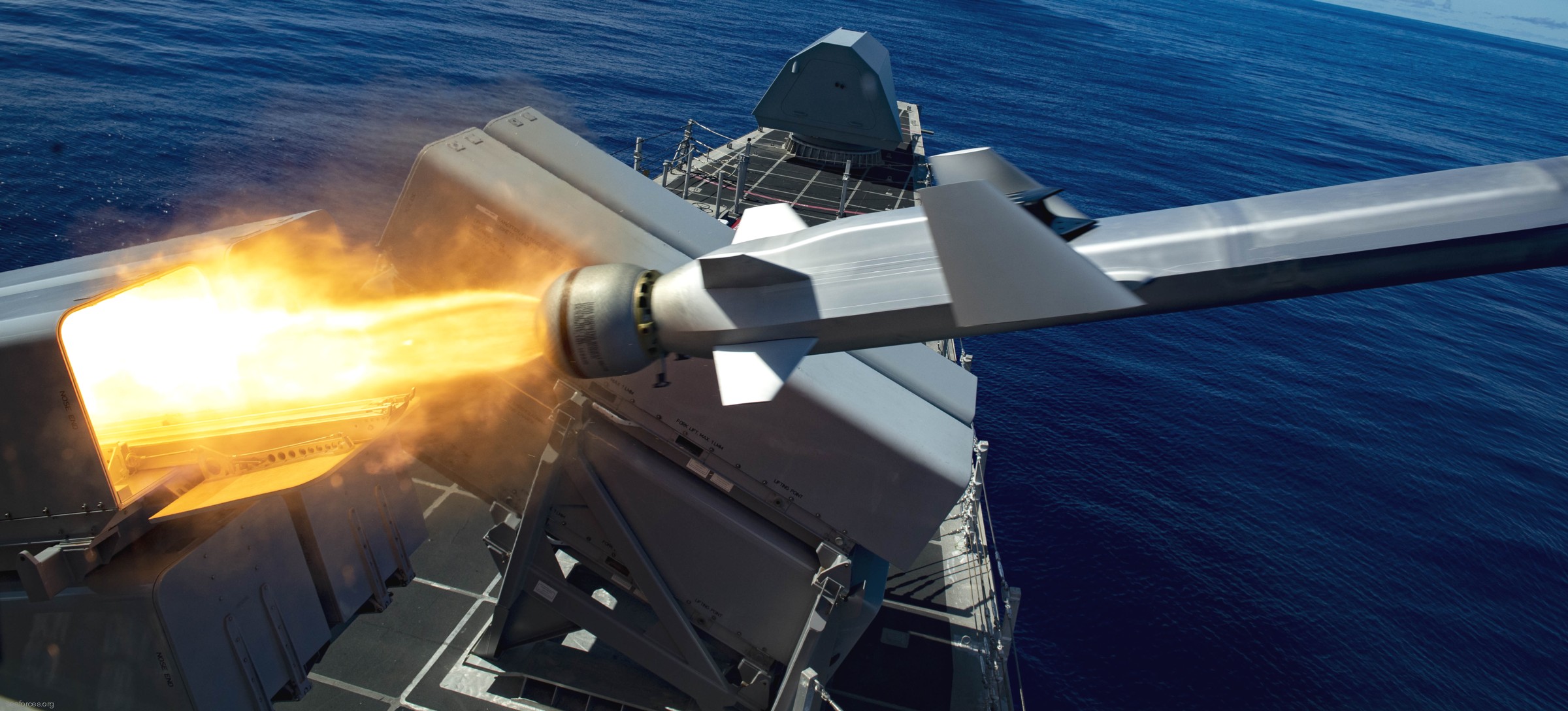 Naval Strike Missile (NSM) was launched from USS Gabrielle Giffords (LCS 10) 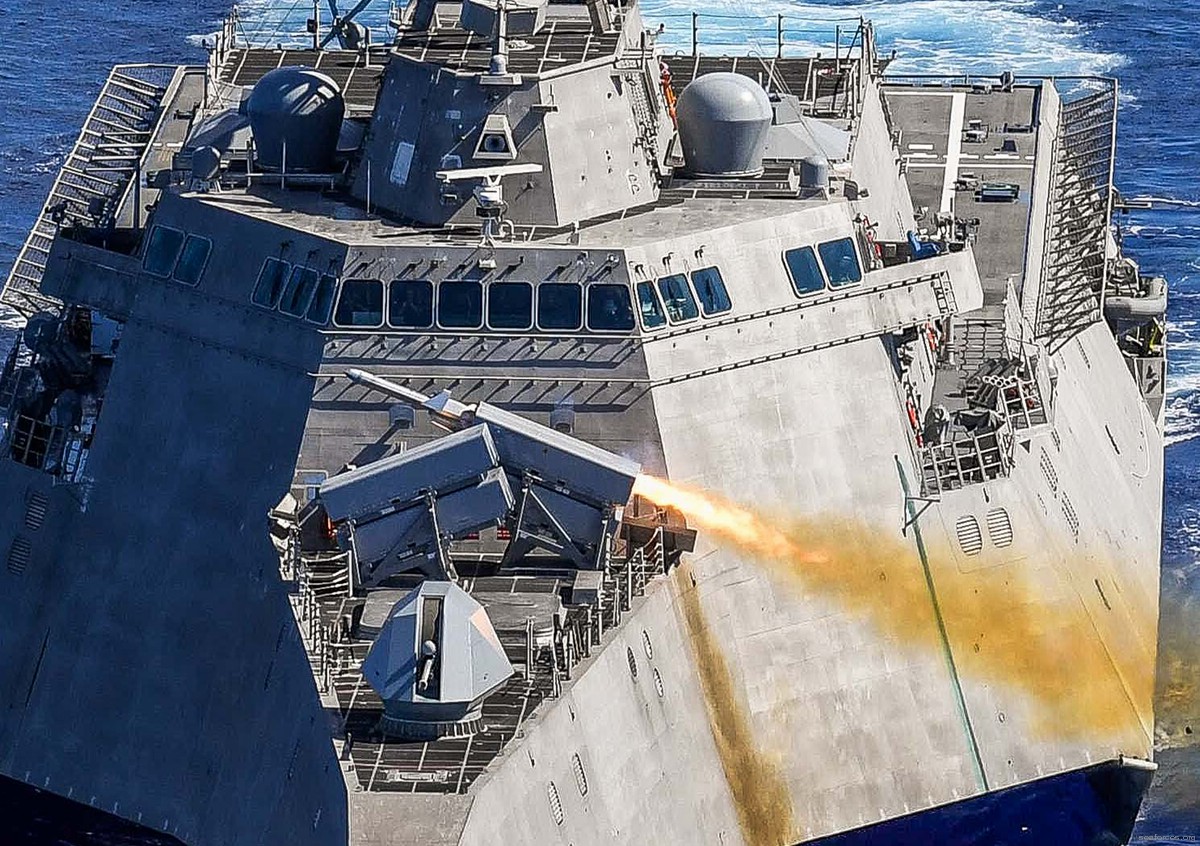 Naval Strike Missile (NSM) was launched from USS Gabrielle Giffords (LCS 10) 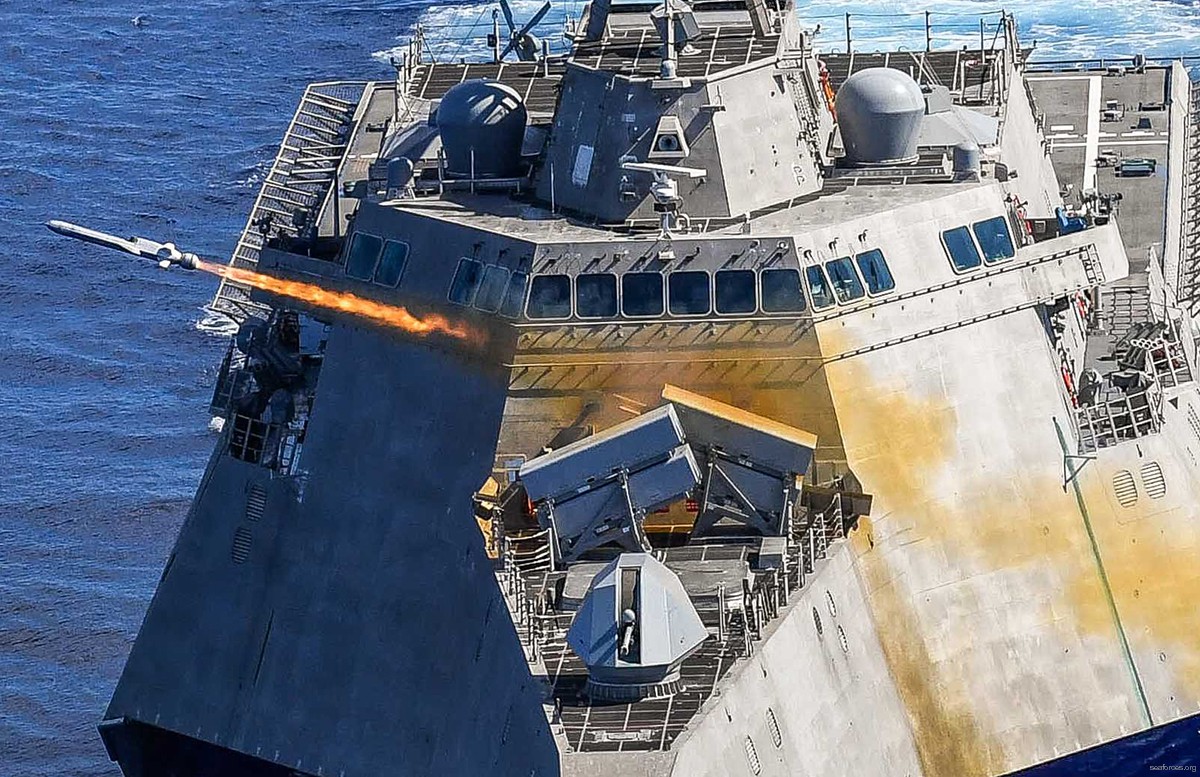 Naval Strike Missile (NSM) was launched from USS Gabrielle Giffords (LCS 10) 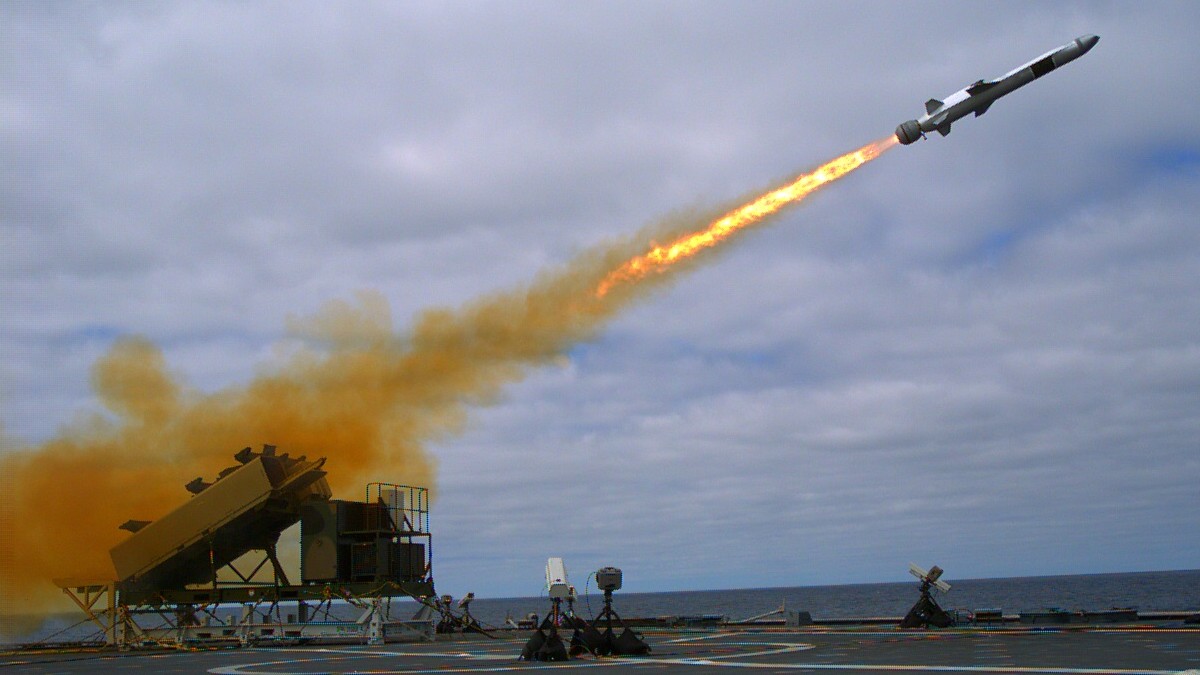 Naval Strike Missile (NSM) was launched from USS Coronado (LCS 4) 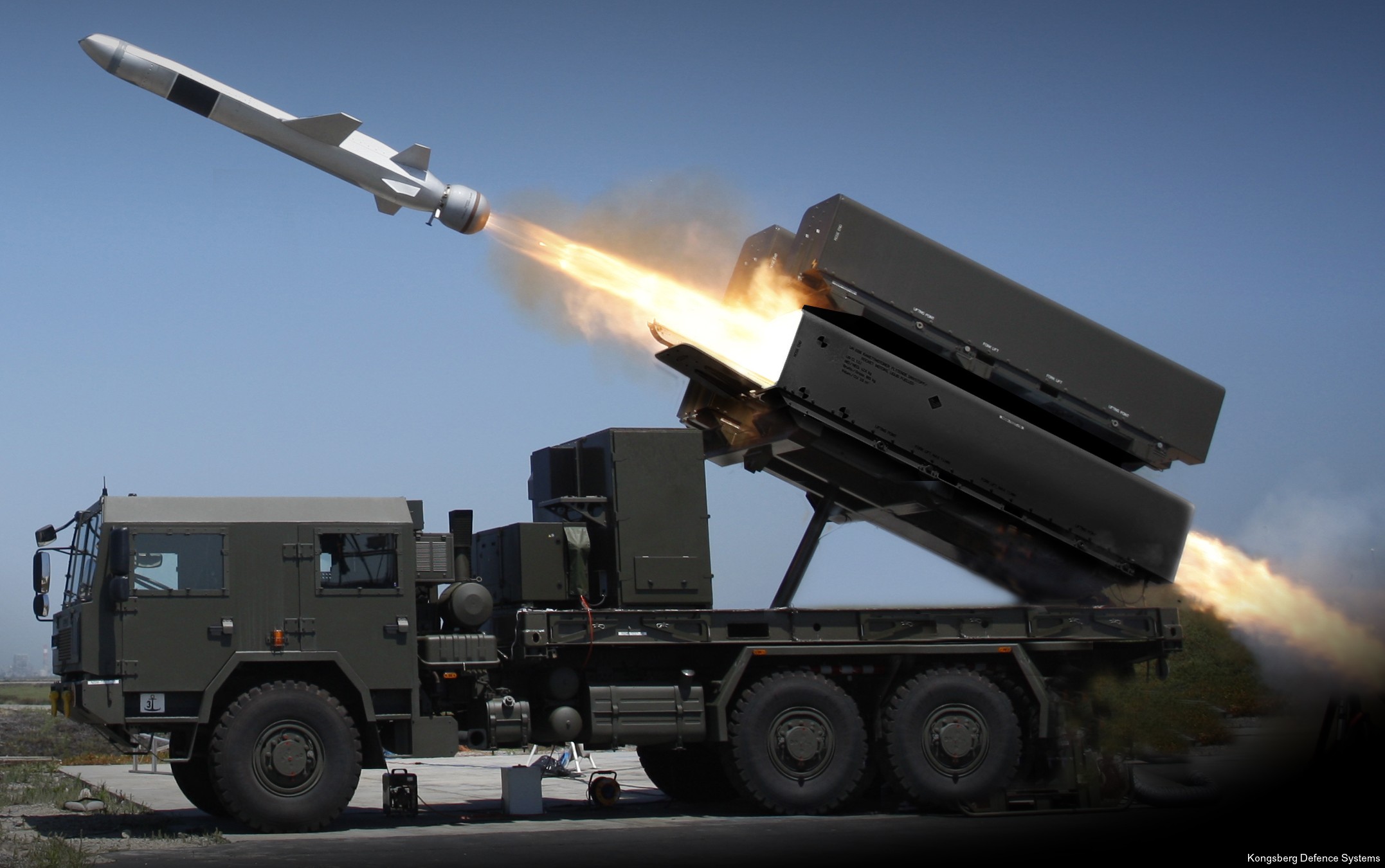 vehicle launched Naval Strike Missile (NSM) 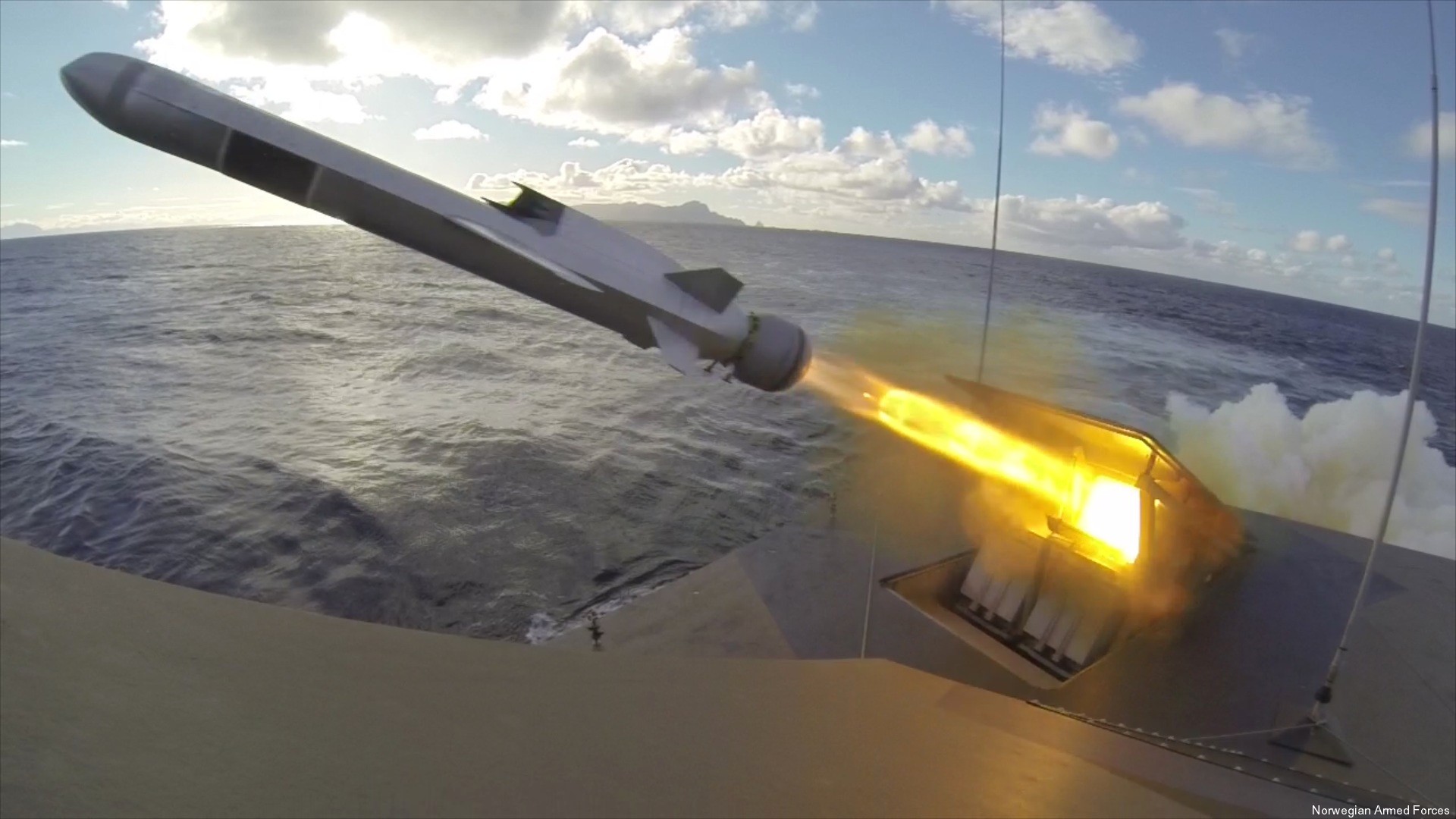 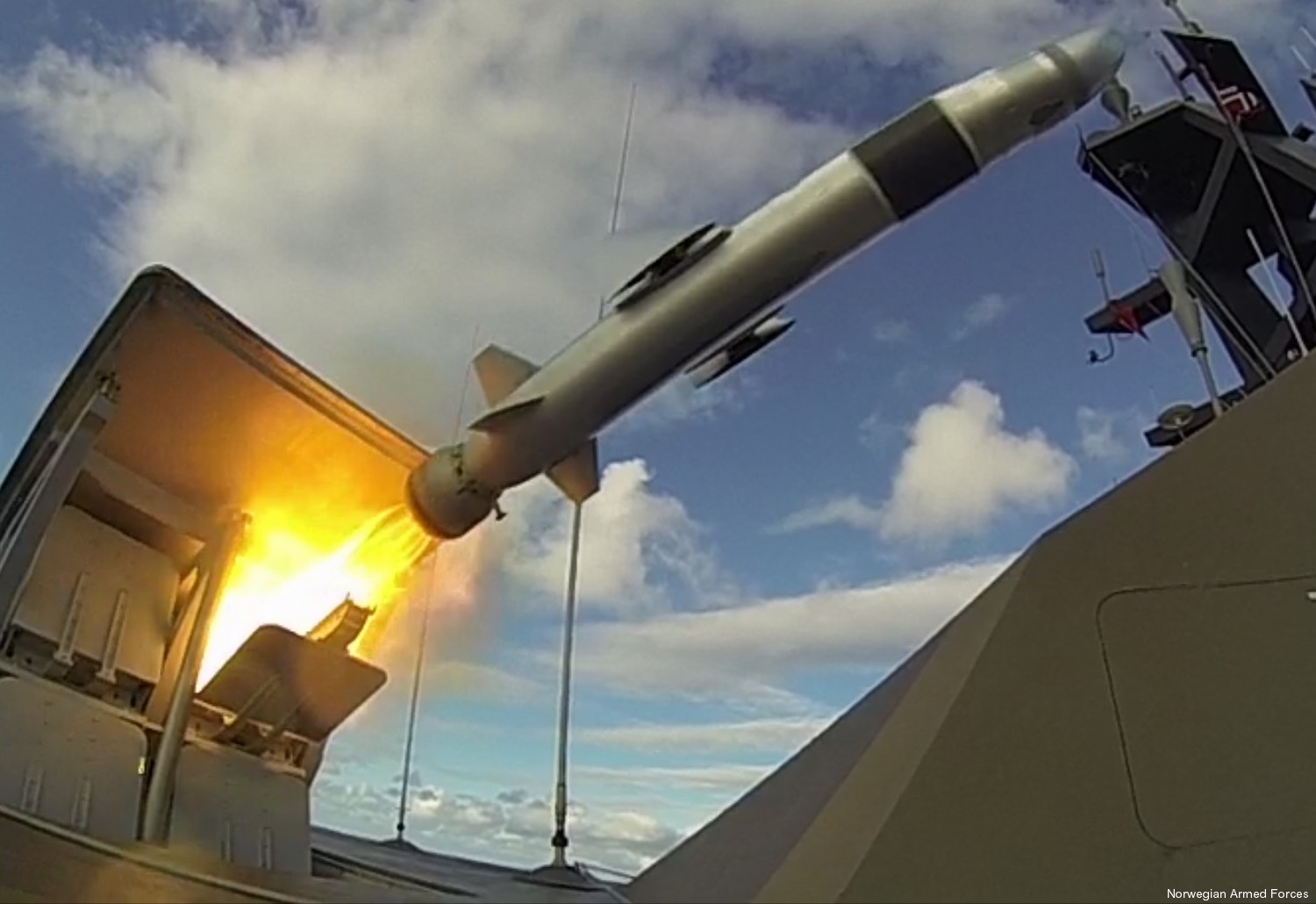 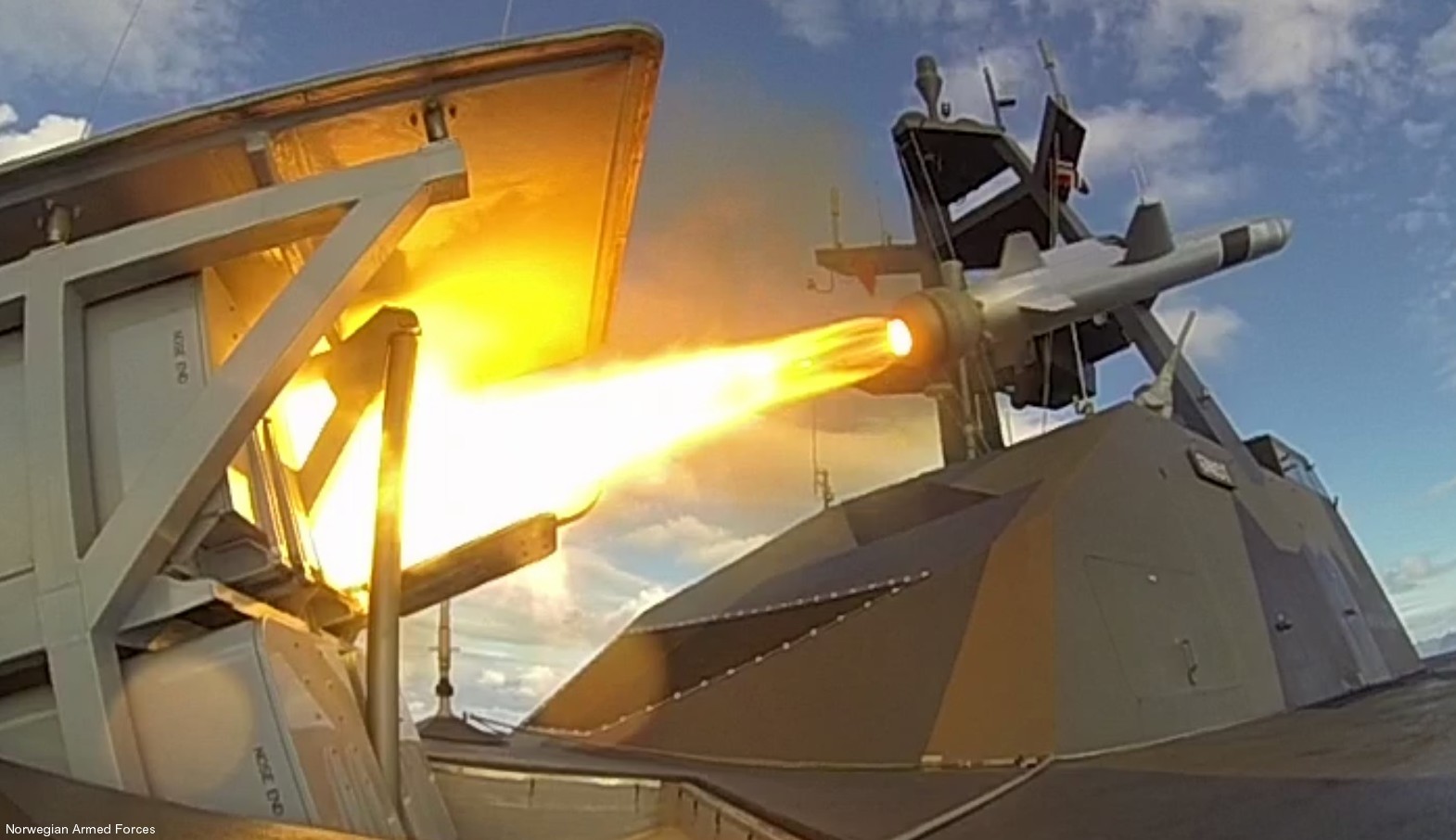 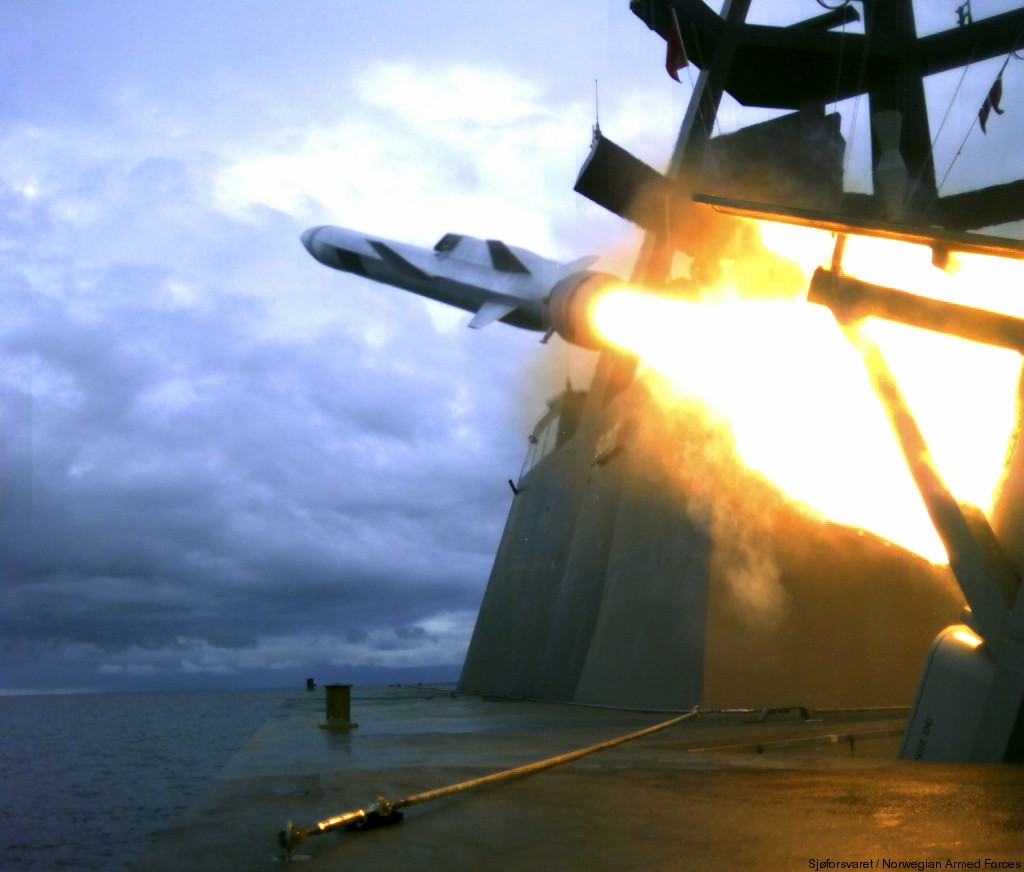 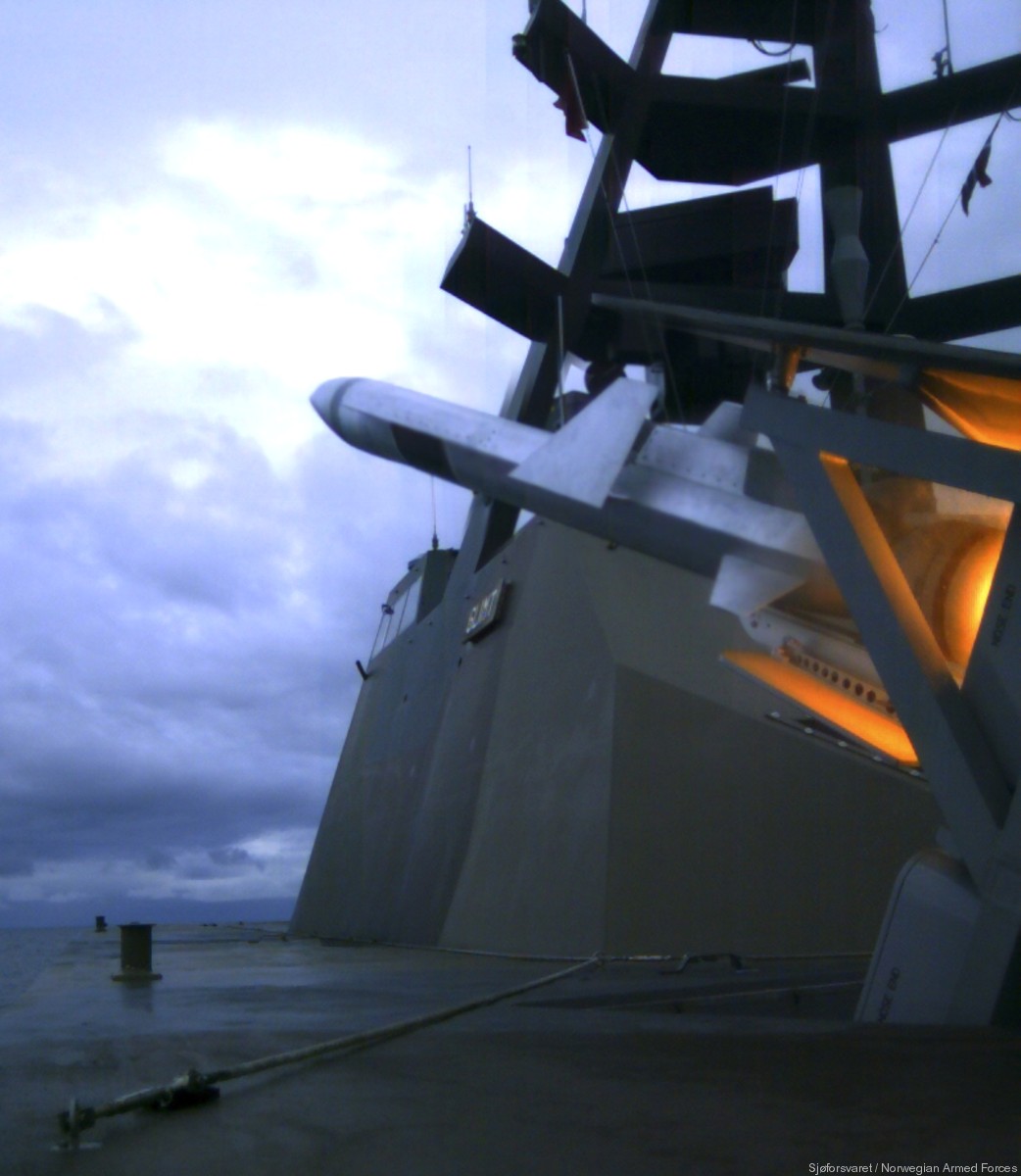 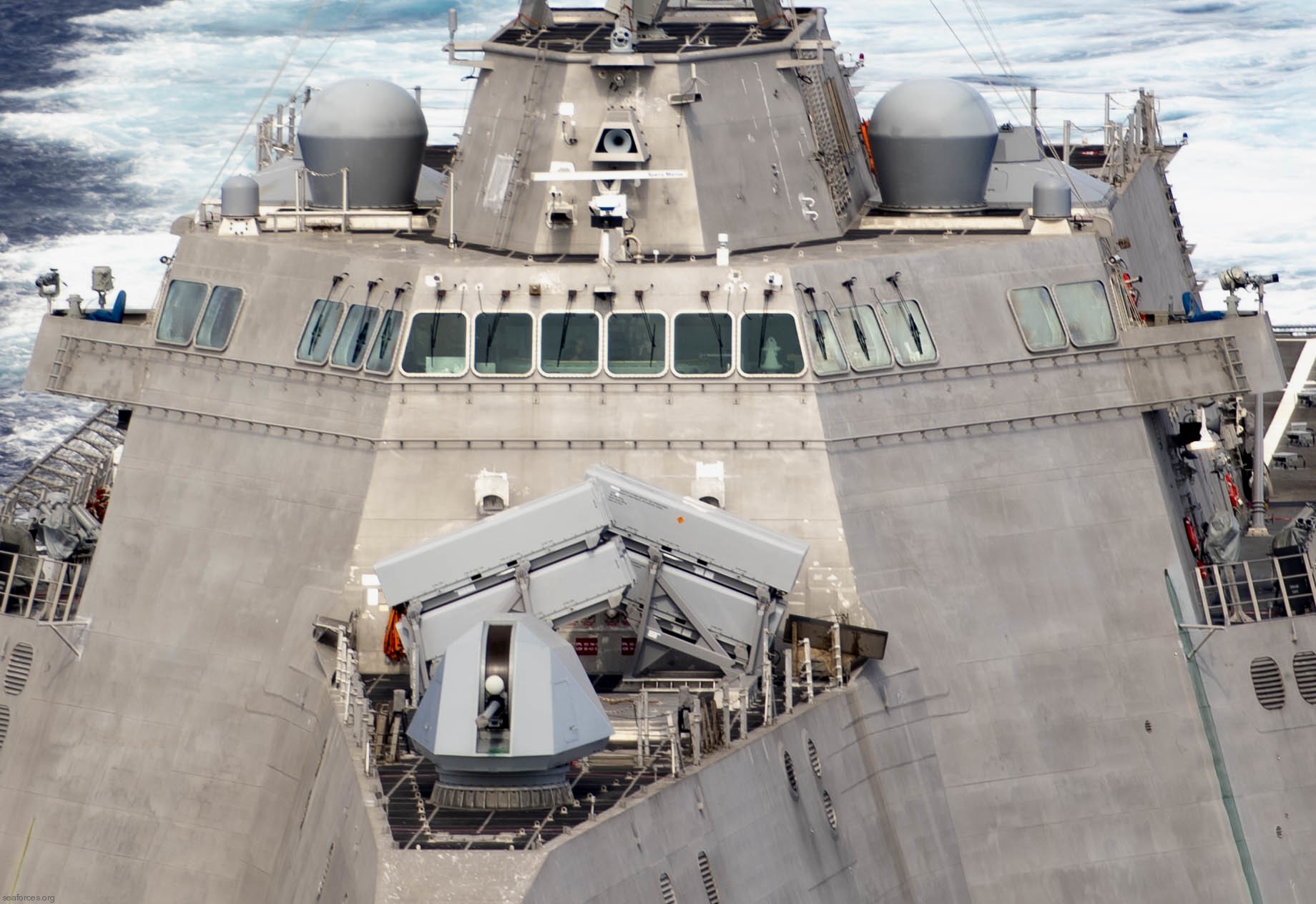 Naval Strike Missile (NSM) launchers aboard an US Navy Independence class Littoral Combat Ship (LCS) 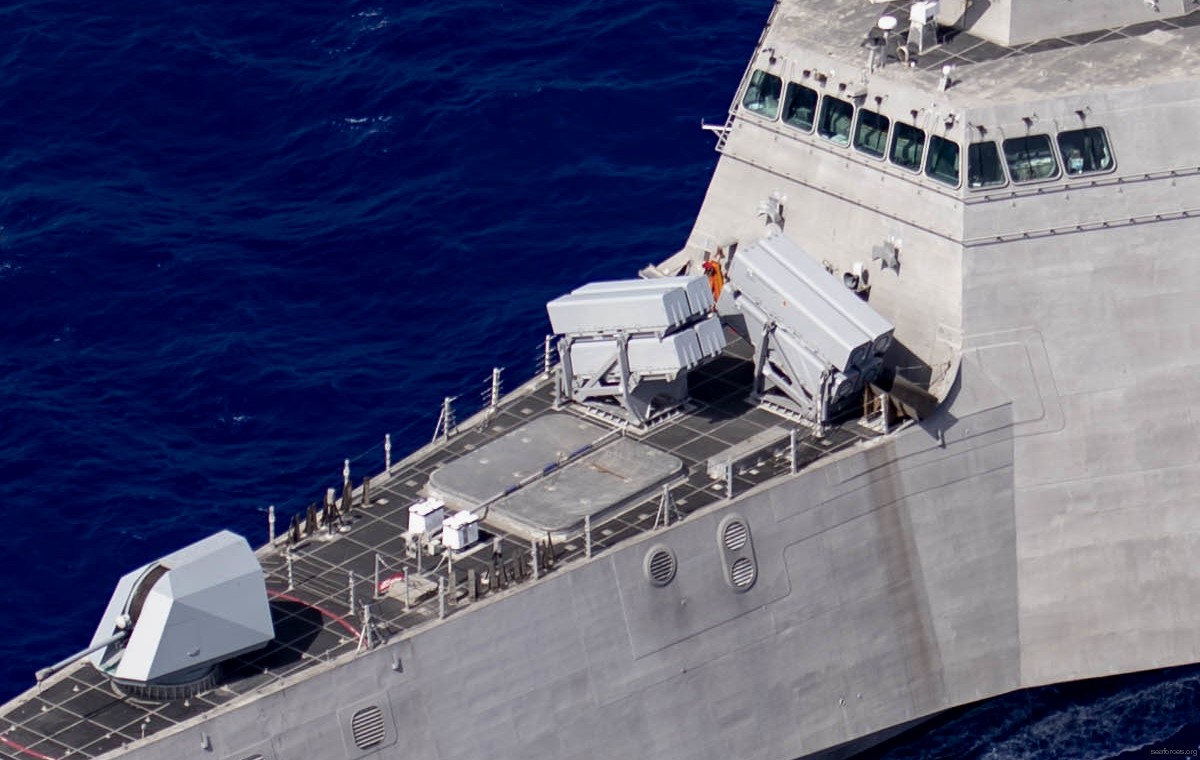 Naval Strike Missile (NSM) launchers aboard an US Navy Independence class Littoral Combat Ship (LCS) 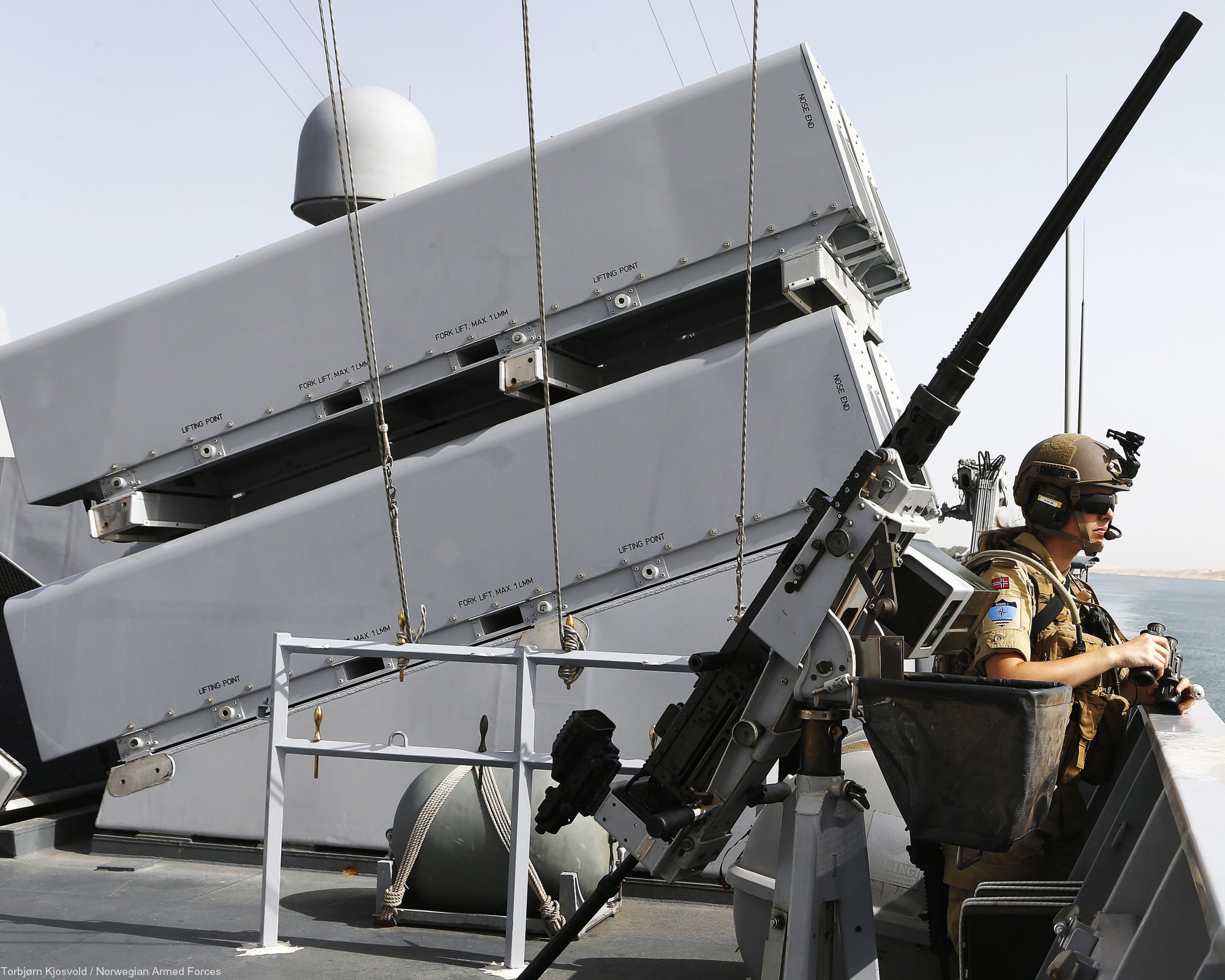 Naval Strike Missile (NSM) quadruple launchers aboard a Royal Norwegian Navy Fridtjof Nansen class Frigate 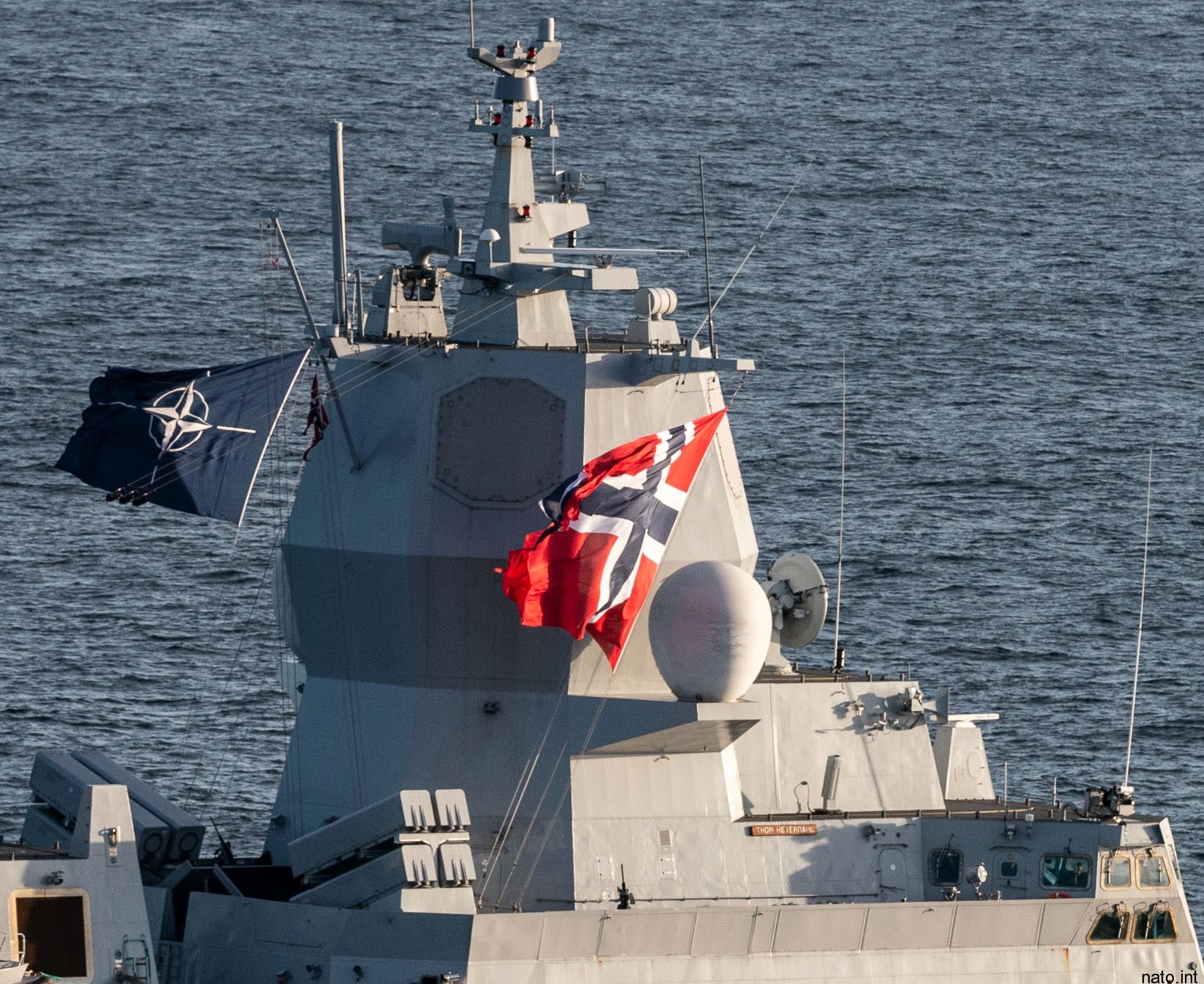 Naval Strike Missile (NSM) quadruple launchers aboard a Royal Norwegian Navy Fridtjof Nansen class Frigate 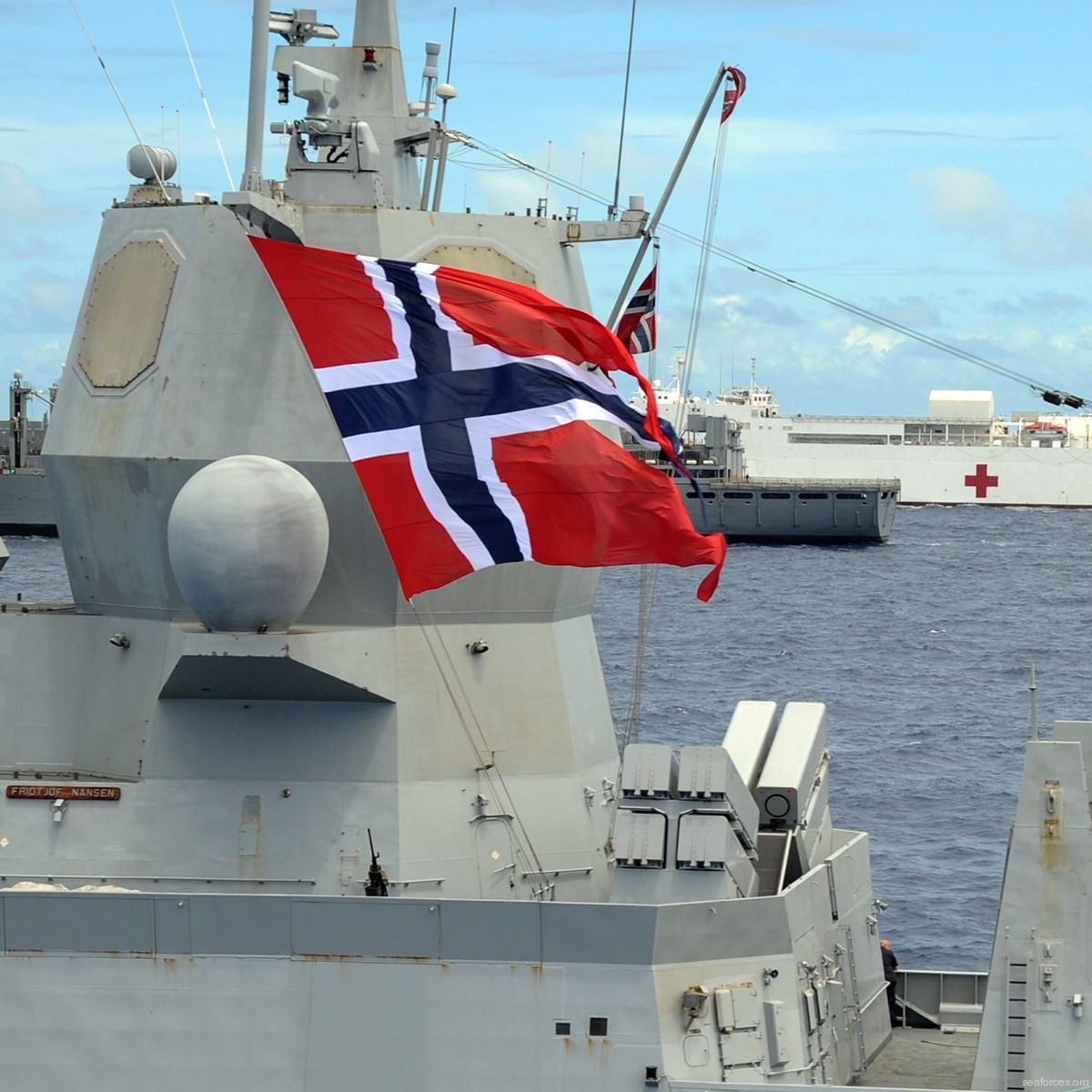 Naval Strike Missile (NSM) quadruple launchers aboard a Royal Norwegian Navy Fridtjof Nansen class Frigate 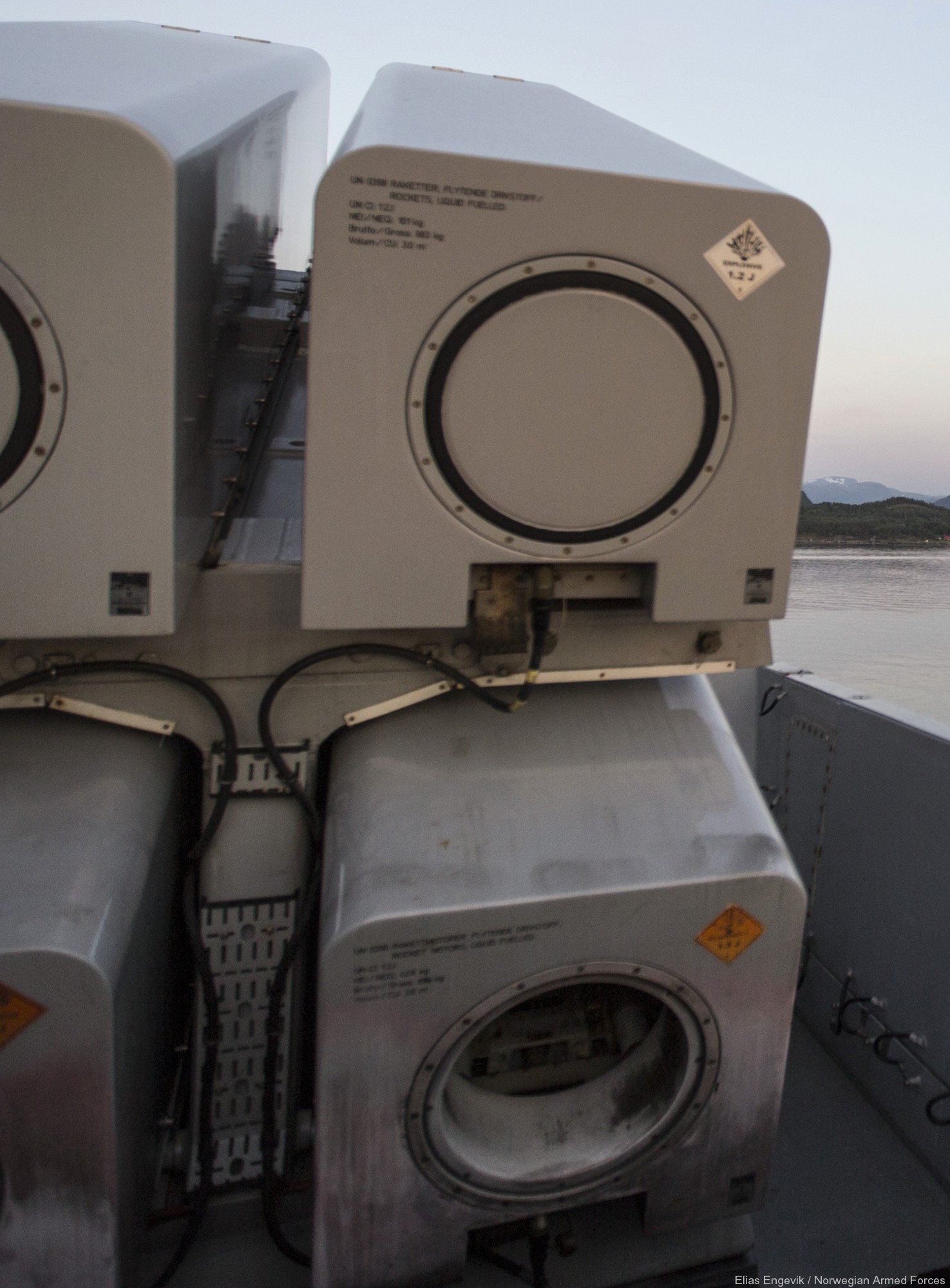 Naval Strike Missile (NSM) quadruple launchers aboard a Royal Norwegian Navy Fridtjof Nansen class Frigate 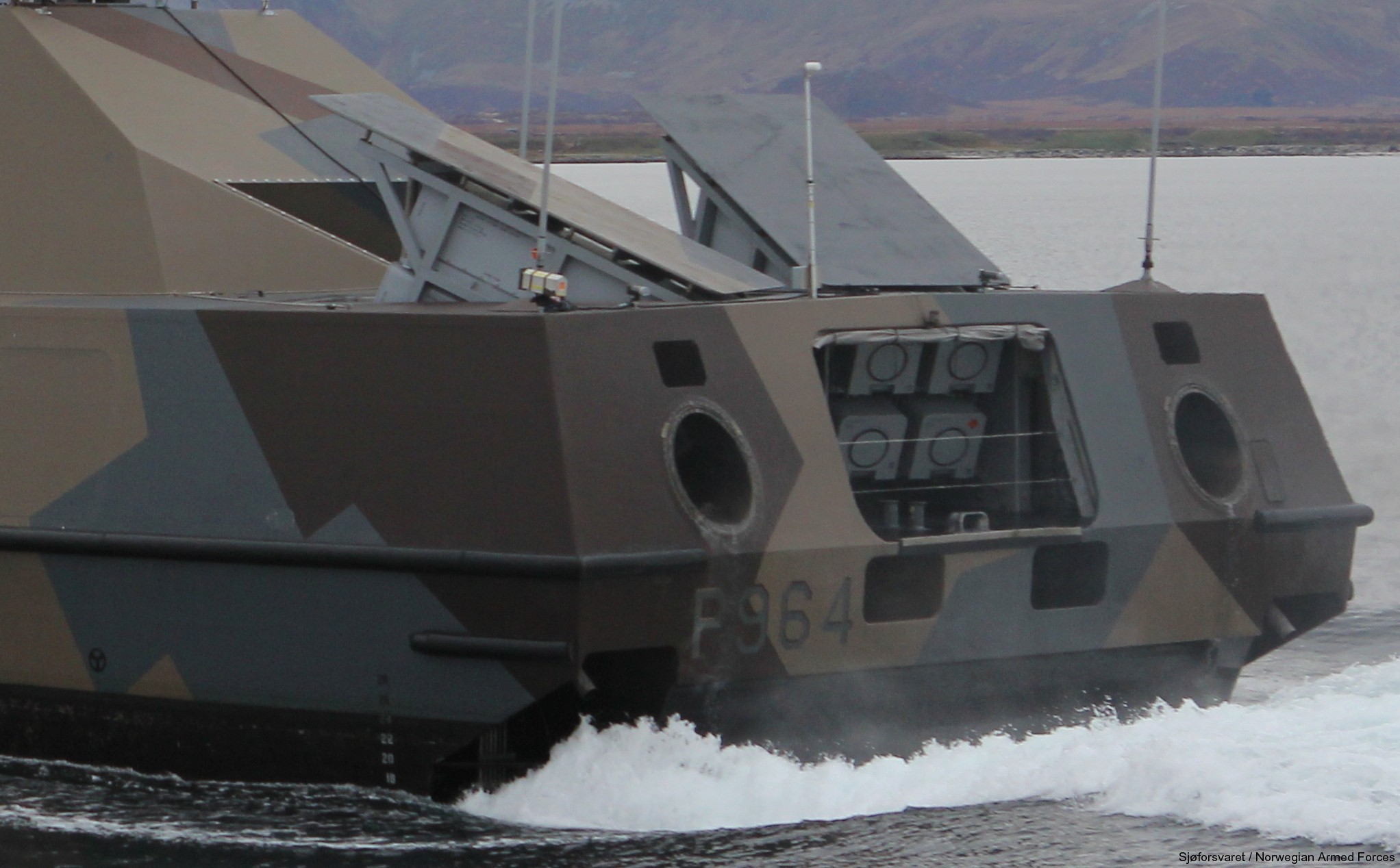 Naval Strike Missile (NSM) quadruple launchers aboard a Royal Norwegian Navy Skjold class Corvette 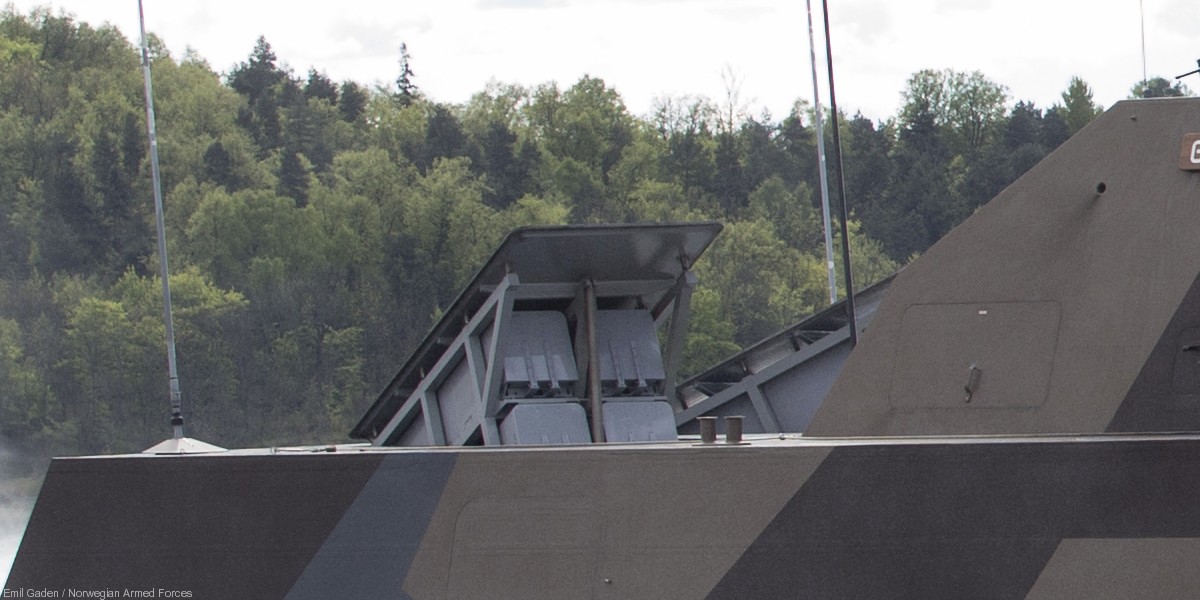 Naval Strike Missile (NSM) quadruple launchers aboard a Royal Norwegian Navy Skjold class Corvette 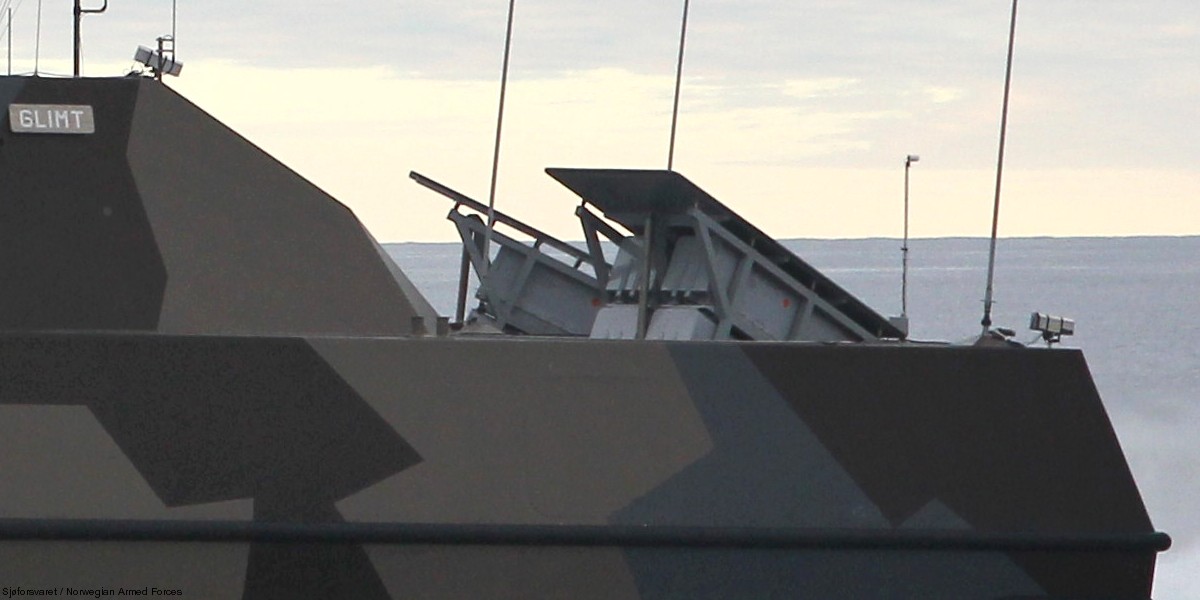 Naval Strike Missile (NSM) quadruple launchers aboard a Royal Norwegian Navy Skjold class Corvette |
|
|
seaforces.org
|
Weapon Systems
start page
| |
